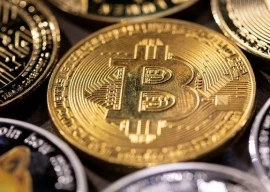As pressure mounts on the government to spill out the number of people living below the poverty line, it has finally agreed to bring a three-year drought to an end.
After dragging its feet for over three and a half years, the government surrendered to the demand of firming up latest poverty figures, an exercise that may establish how much Pakistan Peoples Party led-government did for the welfare of masses.
“The Planning Commission will analyse data collected by the Statistics Division and may firm up poverty numbers in a couple of months,” said Planning Commission Deputy Chairman Dr Nadeemul Haque while talking to The Express Tribune. He said the government will hire competent people to carry out the analysis, as the Planning Commission does not have required expertise.
The current government had refused to endorse 2007 poverty figures and still considers 2006 figures as the last authentic available numbers. In 2006, 22.3 per cent people lived below the poverty line. According to 2007 unofficial statistics, the level fell to 17.2 per cent.
“The 2008 poverty figure was a fraud that was not even endorsed by any renowned economist or poverty expert,” said Dr Haque.
The poverty figures were missing in the Economic Survey of Pakistan 2010-11 for the third straight year. However, the survey did suggest that the poverty rate may have increased to 43 per cent.
Any person earning less than $1.25 per day is considered poor and below the poverty line, according to the World Bank.
Haque sees economic growth as the goal that will automatically address the poverty issue. He said that the Centre for Poverty Reduction and Social Policy Development was abandoned and replaced with the Growth Centre.
The exact number of people living below the poverty line will be available after a couple of months but experts widely expect that at least four out of ten people are living below the poverty line. The government recently released the Household Integrated Economic Survey 2010-11 that provides a glimpse of poverty and inequality in the country.
This survey showed that average monthly household expenditures increased 53 per cent while average monthly income rose 50 per cent over the last three years.
Data shows that the lower and middle classes were affected the most by spurt of inflation and declining incomes. There was an average increase of over 58 per cent in monthly household expenditures of the middle class against an increase of slightly over 50 per cent in income.
For the lower middle class, the increase in income was only 44 per cent while average increase in consumption was 55 per cent. For the poorest of the poor, the increase in average monthly expenditures was 53 per cent against 45 per cent increase in income.
The Statistics Division said that HIES provides the requisite data on consumption to the Planning and Development Division for poverty estimates, leaving the government with no other option but to firm up the numbers.
The Asian Development Bank (ADB) estimates that every 10 per cent increase in food prices pushes 2.2 per cent of Pakistan’s population below the poverty line. The finance ministry had estimated that food prices have surged 94 per cent since its last poverty survey. If ADB’s estimates hold across several years, poverty in Pakistan has increased to 43 per cent.
According to the Economic Survey, nearly three-fourth population lives very close to the poverty line and very small changes can push very large number of people below it, while relatively medium-paced economic growth can also bring several million people out of poverty as well.
Published in The Express Tribune, October 6th, 2011.
COMMENTS (6)
Comments are moderated and generally will be posted if they are on-topic and not abusive.
For more information, please see our Comments FAQ

1725612926-0/Tribune-Pic-(8)1725612926-0-165x106.webp)















@fahim:
No, not at all. That is a fanciful number. I don't think there is any country in the world with 60-70% poverty. You need to do some serious reading. Actually, Google countries with 60-70% poverty and see what comes up.
Keep in mind two MITIGATING factors: workers' remittances and donations/charity.
Through normal banking channels the former was about $11 billion. The State Bank says another 50% comes in through the hundi route. That means inflows of $ 16.5 billion DOLLARS multiplied by Rs 86/$ = Ra 1,419 billion rupees. That's a lot of moola.
Second, Pakistani's are probably the most generous when it comes to making donations and giving to charity per capita. maybe be they are making up for being the world's biggest tax cheats and know they have to meet their Maker someday.
Don't ignore these two huge mitigating factors -- slums or no slums.
It is sad that although we talk about poverty all the time that excluding me there are only two comments. May be the article was too technical but I would have expected people to jump on it.
I expect it to be as high has 60-70% of this population. Cities like karachi are full of slums and beggars and is filthy enough, and how many goes to check the status of small towns and villages? With high unemployment, very less govt spending, diversion of funds from business economy education health to defense we can only expect poverty rate to go high.
The Planning Commission is to engage "experts"? Who might these be and what is the fee for their "analysis"? Please ask the Deputy Chairman and let us know.
And we now have a "Growth Center"? To massage the ego of the Deputy Chairman whose brilliant idea this is? When he goes, the first thing that will happen is that the center will be closed down.
Does making it a "Growth Center" cause growth?
This is just amazing. I am speechless at this fraud being perpetrated in the name of the poor.
**Everybody talks about how 'broke' the country is, nobody ever talks about how 'broken' it is.